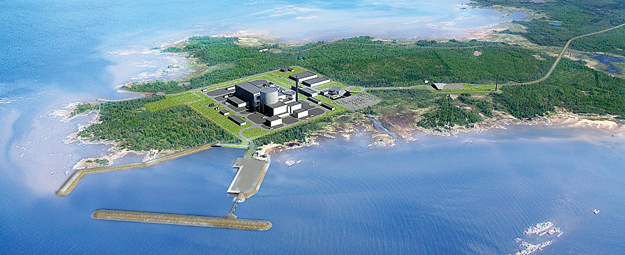
Hanhikivi: out of politics
back to contentsThe decision of local MPs and businessmen is easy to explain. Policy matters, but there is the economics Europe doesn’t forget about. The Hanhikivi NPP construction project gives Finnish contractors a perfect chance to have a good titbit; moreover, the plant construction is the largest investment project in the country.
The meeting Rusatom Overseas held May 13 in Helsinki had been supposed to host about 100 people. But in the long run the number of Finnish builders and industrialists exceeded 150 persons. The conference hall was short of seats. The congress center staff hastily gathered chairs from all service room to host all the guests. On the whole, the event was attended by representatives of about 70 Finnish and international companies as well as members of Finland’s entrepreneur associations.
“At the meeting we said it was a large and complex project, what cooperation areas were planned for, what was the procedure for submitting participation proposals, and what they should contain,” Galina Shchemeleva, the director of the Hanhikivi-1 NPP construction project directorate at Rusatom Overseas, says. “This is a first meeting of the kind; it helped to understand what the Finnish colleagues are interested in. This will help us to identify strategic partners within the project,” she adds. According to Shchemeleva, Rusatom Overseas plans to hold a meeting with companies, which were engaged in construction of the third reactor of Olkiluoto NPP (which is implemented by AREVA with much difficulty). The Russian nuclear specialists want to have a closer look at the experience the Finnish subcontractors had, both negative and positive.
After her address, representatives of local businesses were queuing at Galina Shchemeleva with their business cards to hand over. “The Finns didn’t want just to get familiarized. There were many questions to clarify, she says. “There were representatives of consulting and construction companies who offer both the services to organize the construction process and principal contracts for groups of buildings. We have already posted a special e-mail box for requests. The collection of proposals on all aspects of the nuclear construction has started. Subcontractors can send requests stating what they are ready to do. We demonstrated a clear-cut day-by-day plan to them, i.e. what we do now and what we will do later.”
The interest of Finnish companies in the project turned out to be very high, according to Galina Shchemeleva. One of the first projects to be assisted by the subcontractors is the construction of the 8-kilometer road from the plant site to the highway running in this district. The work is supposed to start late August – September this year.
By majority of votes
The municipal council of Pyhajoki, which is to host the plant, May 7 ruled to support the construction by the majority of votes: 18 votes were given for and 3 were against the project. To remind, as far back as summer 2010 Fennovoima Oy was granted the parliamentary permit of principal regarding the nuclear build but which yet had to be approved by the local authorities. However, at that time ROSATOM wasn’t among the bidders for the build. So the voting procedure had to be repeated.
In March this year Fennovoima Oy submitted an application to the Ministry of Employment and the Economy of Finland to get an addendum to the permit of principal because the project had been substantially changed as compared to the initial plan. Then, the issue was revisited by the Pyhajoki municipal council. We note that when the project was discussed for the first time, there were lesser proponents among the local MPs: only 16 council members said yes to the project. Then, a resolution of the Council of State and Parliament of Finland was to be obtained.
The Finnish customers preferred ROSATOM as the Hanhikivi-1 technology vendor, while refusing offers of Toshiba and AREVA. Let’s take a look at the chronology. At the first stage, Japanese and French 1600-megawatt designs were under consideration. Then, the Finns invited Toshiba with its EU-ABWR technology to direct negotiations. In parallel, the customer started considering options of smaller power reactors. Then, AREVA gave another try to join the dialogue by offering ATMEA-1 technology developed jointly with Mitsubishi Heavy Industries. However, later Fennovoima Oy abandoned all earlier proposed designs and approached ROSATOM directly.
Since that point of time the events came thick and fast. The parties drafted the agreement just in six months after the consultations and signed it in December 2013. By the way, at the meeting Risto Kittila, deputy chair of the municipal board, noted that the change of the nuclear plant vendor would facilitate nuclear power development in the country. Even the local politicians, who go antinuclear, agree that the Russian NPP vendor is the premier choice. For instance, Jaakko Jukkola, a representative of the electoral association, said: my position of principal towards nuclear hasn’t changed, I’m still against it. But in our view, the new NPP vendor is still better the former options, because we have to treat with care the good relations with the great neighbor.




